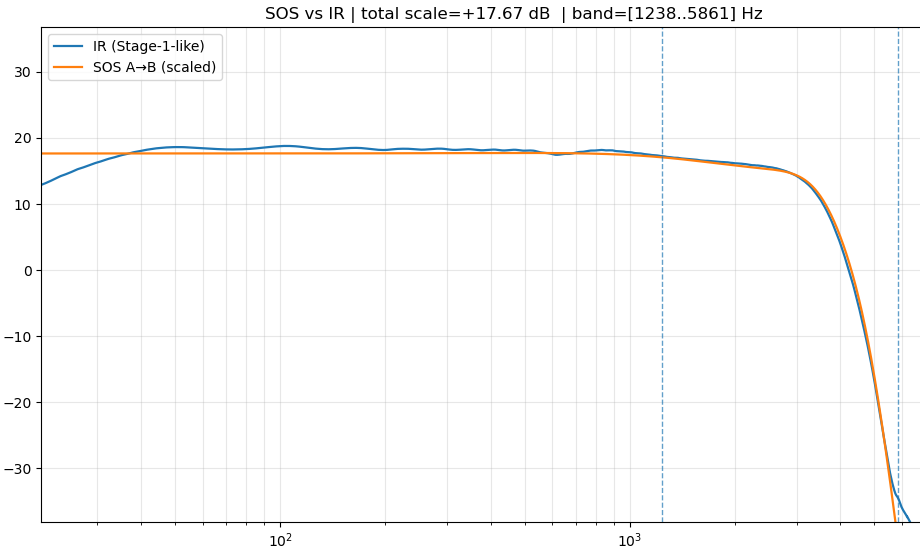I wrote a bbd delay
-
@griffinboy Sounds great!
-
@Orvillain @griffinboy Wow look at those 🪣s
Nice work they both sound stellar!
-
@griffinboy BEAST MODE!



-
@Orvillain Sick!


 The ending had me jumping! haha.
The ending had me jumping! haha. -
I've tried to be as authentic as I can. The model can sound like a bunch of different styles, depending on the parameters.
This is what can be changed:
- Delay time (ms)
- Mix and Feedback
- Chip count
- Stage count (each chip)
- Input sample+hold
- Bit-depth (additional crunchy stage, optional)
- Feedback tone - lowpass, highpass, and two peak bands
- Compander - on/off, threshold, ratio, knee, time
- Input, feedback, output saturation types - none, hard, soft, asym, sym, tube, tape, exponential, and cubic curves.
- Noise level
- Clock whine level
- BBD Droop (level loss with longer times)
- Transient softener in the feedback path
- Micro blur effect in the feedback path
- Pre/De-emphasis on/off (shelving tilt)
- Chip voicing (MN3005, MN3205, MN3007, MN3207, SAD1024, R5106)
- wow rate and depth
- flutter rate and depth
- clock jitter
-
That's really comprehensive, more so than mine.
The only thing I noticed missing is possibly the fact that filters change shape in BBD delays depending on the delay time. They kind of warp into a lower order lower filter as time increases.If you take IR measurements from a real device you can recreate matching filters using vector fitting!
I'd love to hear more of your delay though. BBD delay is wonderful.
-
@griffinboy said in I wrote a bbd delay:
That's really comprehensive, more so than mine.
The only thing I noticed missing is possibly the fact that filters change shape in BBD delays depending on the delay time. They kind of warp into a lower order lower filter as time increases.If you take IR measurements from a real device you can recreate matching filters using vector fitting!
I'd love to hear more of your delay though. BBD delay is wonderful.
Interesting, I'll look into that! Right now my filters are biquads, and they do adjust based on what chip I select. I've also plumbed in more parameters this morning now, so I can actually select all my clipping types for each stage from the HISE UI. It is great!!
It runs in true stereo too. So I'm eventually going to add note selection options, and a spread control to offset the delay times by an amount.
-
Really fun ideas!
I took a couple of weeks to learn how to derive filters from analog because I wanted some BBD delay antialiasing filters that match hardware exactly. If you need any tips on that I'm happy to share.
But in all honesty, making up new filters is probably more fun. It's not like the analog filters are the best ever - there are probably unexplored shapes that will sound more interesting or be useful in different ways.

-
@griffinboy said in I wrote a bbd delay:
It's not like the analog filters are the best ever
Oh yeah undoubtedly, but I reckon that's part of the magic and charm. I've got a few SVF models kicking around, and a Moog model too, that might be interesting to try too.
-
Oh yeah I tried a moog. It was arguably not very good haha.
It becomes very dark in a very musty way.Unless you're willing to stack a few to get a high order it's going to sound quite blurry. Whether or not that's a bad thing is up to you.
For refrence the real antialising filters from pedals like the memory man are steep. They are almost like low order elliptic lowpasses. That's the closest 'standard' filter response I found to the real thing. This allows them to have a high and crisp feeling cut-off (3.5k) while still killing aliasing.
It's different to a synth filter.But that's what the hardware BBD effects do anyway.